Abstract
A gas chromatographic-mass spectrometric method for detecting 5-fluorouracil (5-FU) in serum at concentrations as low as 10 ng/ml was used to determine to what extent 5-FU was present in the serum of patients taking oral 5-fluorocytosine (5-FC). Preliminary studies in two patients and two healthy volunteers given an initial 2-g oral dose of 5-FC demonstrated sustained serum 5-FU levels (>100 ng/ml) during the 5 h after ingestion of drug. Pharmaceutical preparations of 5-FC used in these studies were shown to be insignificantly contaminated with 5-FU (<0.03%), suggesting in vivo conversion of 5-FC to 5-FU had occurred. Serum samples from seven patients with cryptococcal meningitis treated with amphotericin B and 5-FC were examined for 5-FU. Five of these patients had experienced hematological or other toxicity attributed to 5-FC at some time during the course of therapy. Of 41 serum samples, 20 were observed to have 5-FU levels greater than 1,000 ng/ml in the range observed with cancer chemotherapeutic doses of 5-FU known to be associated with hematological toxicity. It is concluded that conversion of 5-FC to 5-FU occurs in humans and furthermore that 5-FU may account for some of the toxicity observed with 5-FC.
Full text
PDF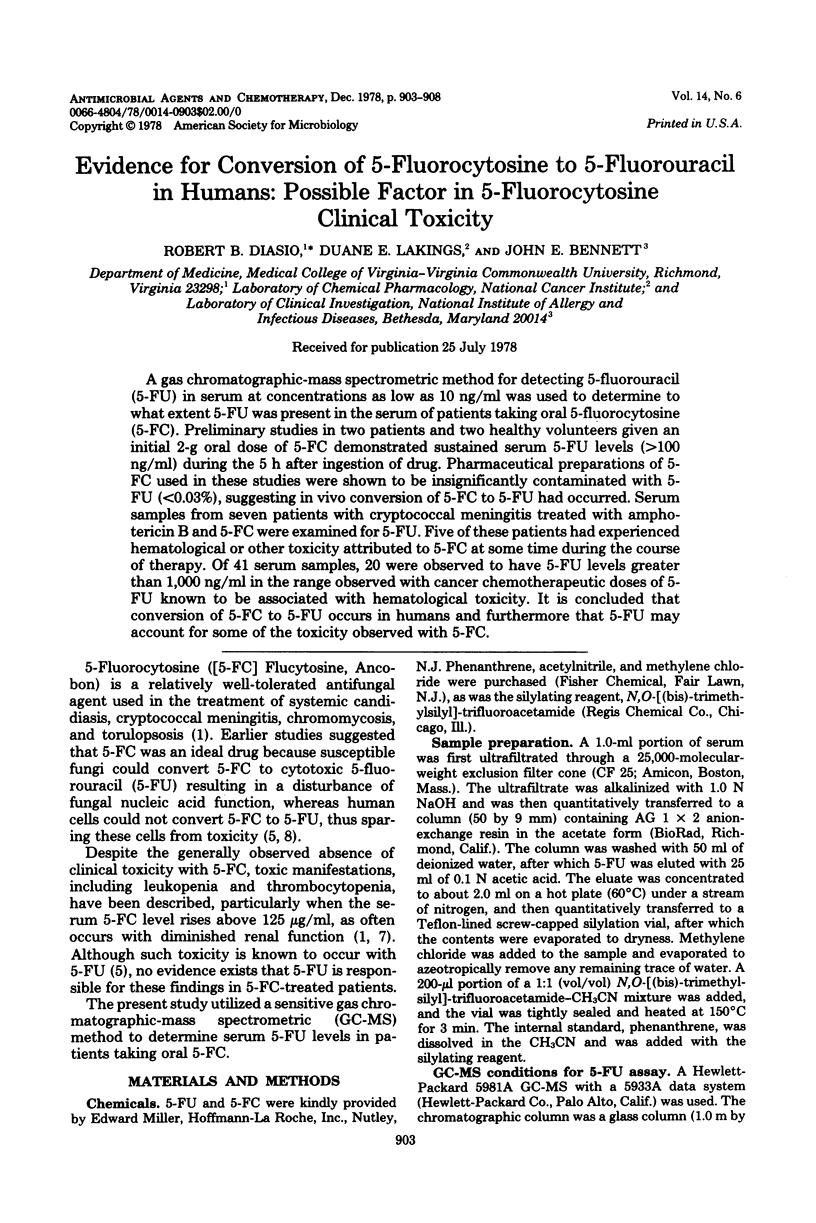
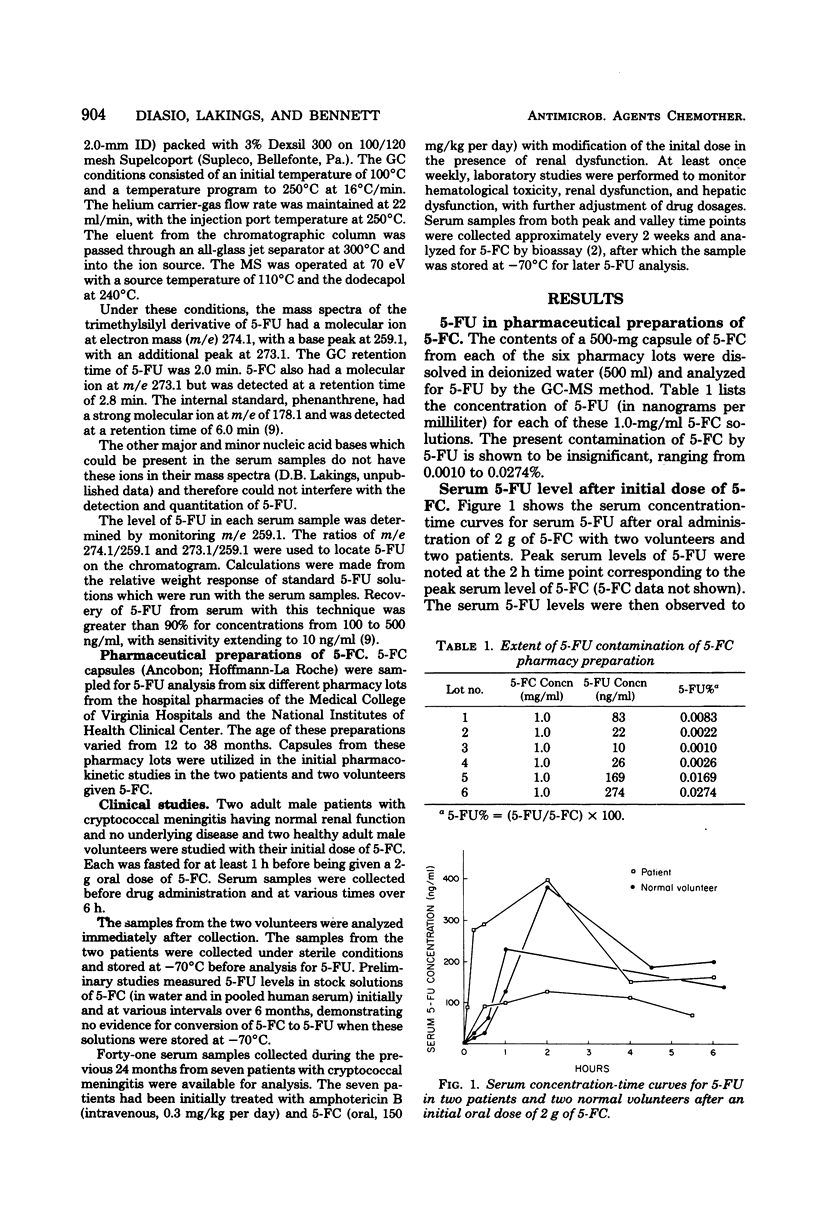
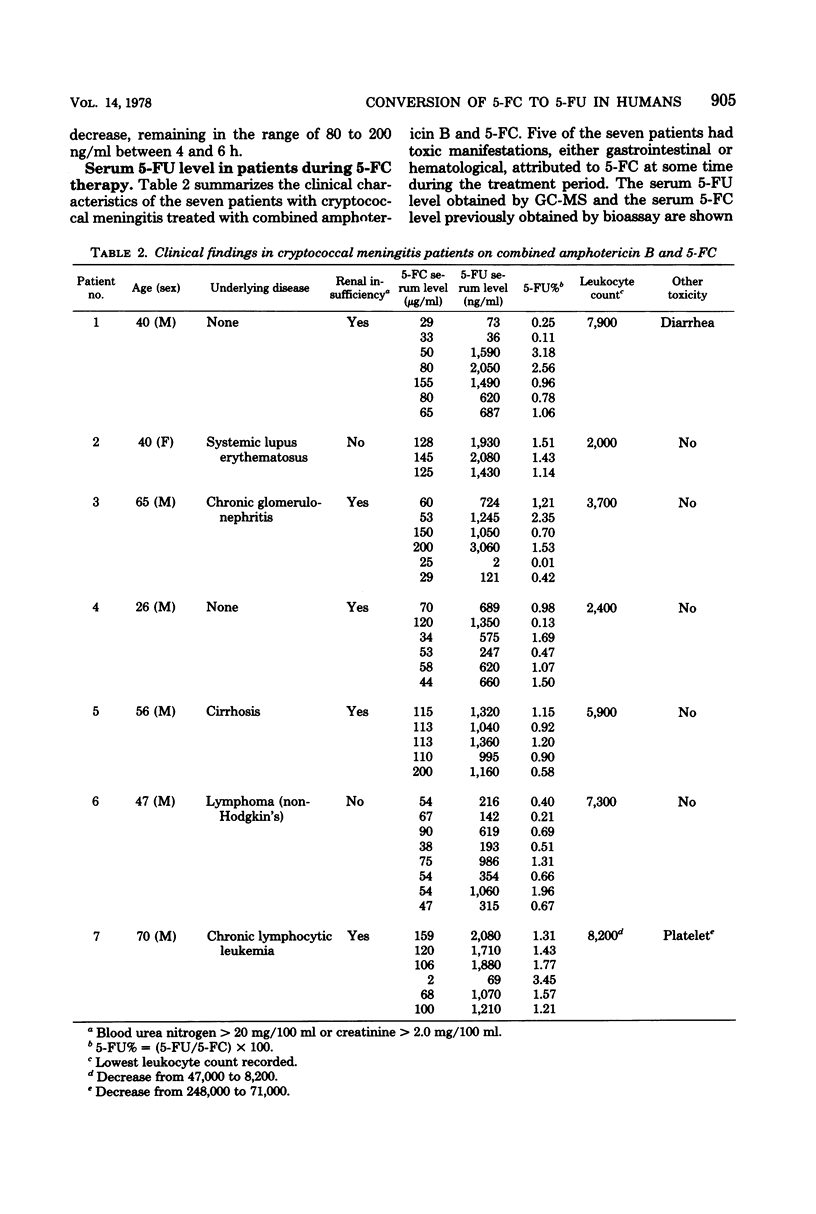

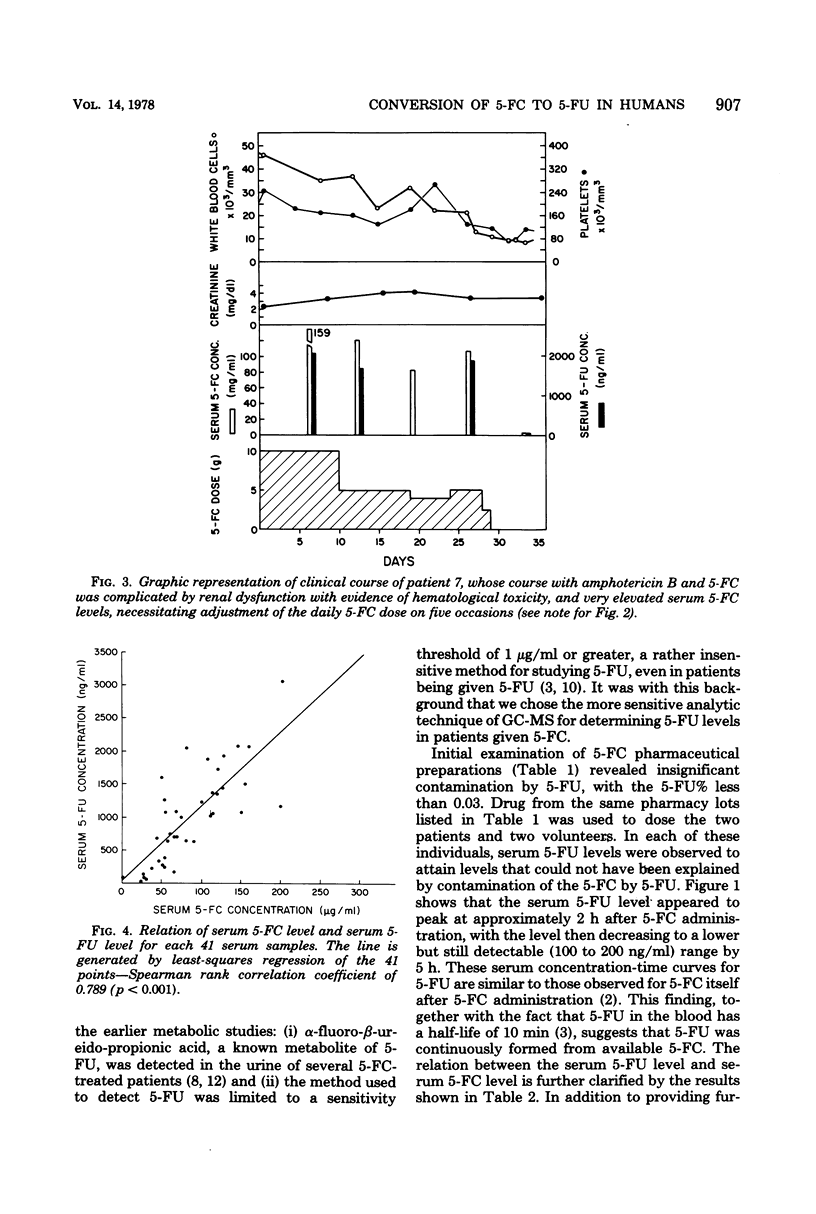
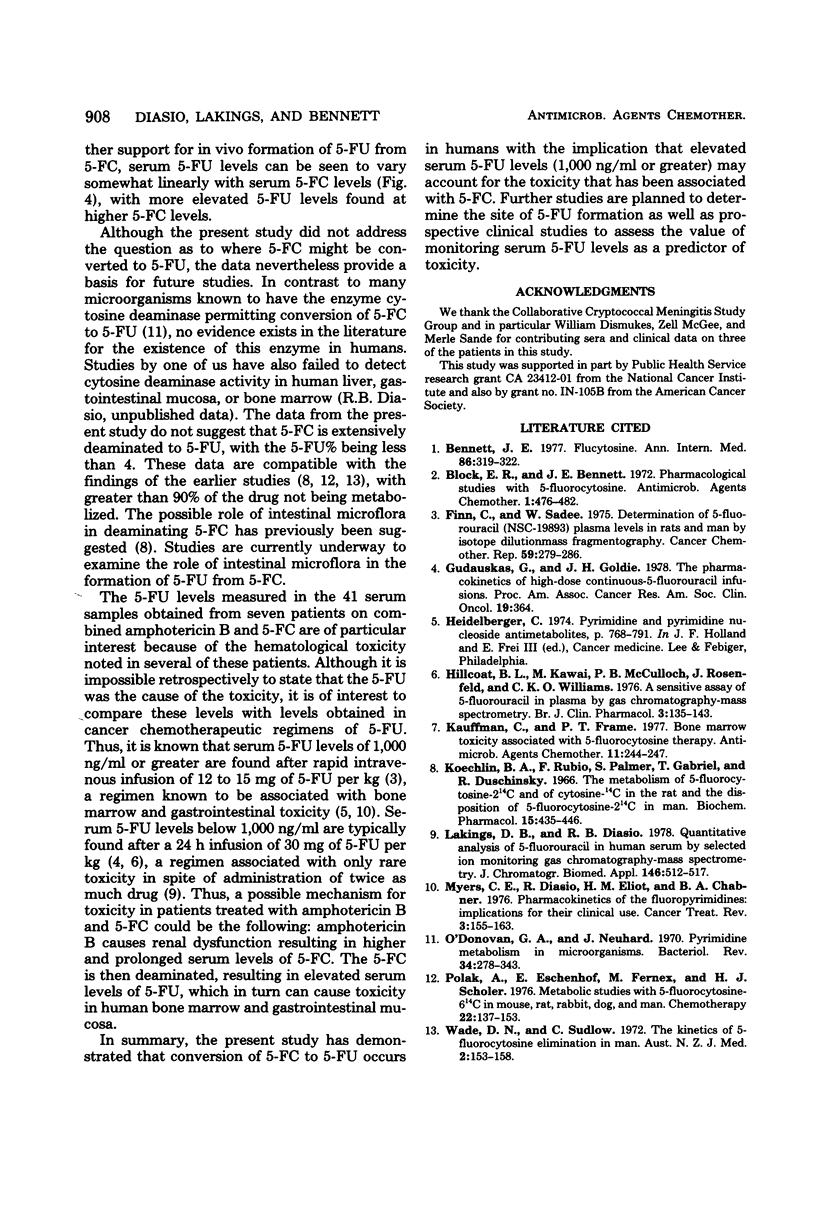
Selected References
These references are in PubMed. This may not be the complete list of references from this article.
- Bennet J. E. Flucytosine. Ann Intern Med. 1977 Mar;86(3):319–321. doi: 10.7326/0003-4819-86-3-319. [DOI] [PubMed] [Google Scholar]
- Block E. R., Bennett J. E. Pharmacological studies with 5-fluorocytosine. Antimicrob Agents Chemother. 1972 Jun;1(6):476–482. doi: 10.1128/aac.1.6.476. [DOI] [PMC free article] [PubMed] [Google Scholar]
- Finj C., Sadée W. Determination of 5-fluorouracil (NSC-19893) plasma levels in rats and man by isotope dilution-mass fragmentography. Cancer Chemother Rep. 1975 Mar-Apr;59(2 Pt 1):279–286. [PubMed] [Google Scholar]
- Hillcoat B. L., Kawai M., McCulloch P. B., Rosenfeld J., Williams C. K. A sensitive assay of 5-fluorouracil in plasma by gas chromatography-mass spectrometry. Br J Clin Pharmacol. 1976 Feb;3(1):135–143. doi: 10.1111/j.1365-2125.1976.tb00580.x. [DOI] [PMC free article] [PubMed] [Google Scholar]
- Kauffman C. A., Frame P. T. Bone marrow toxicity associated with 5-fluorocytosine therapy. Antimicrob Agents Chemother. 1977 Feb;11(2):244–247. doi: 10.1128/aac.11.2.244. [DOI] [PMC free article] [PubMed] [Google Scholar]
- Koechlin B. A., Rubio F., Palmer S., Gabriel T., Duschinsky R. The metabolism of 5-fluorocytosine-2-14-C and of cytosine-14-C in the rat and the disposition of 5-fluorocytosine-2-14-C in man. Biochem Pharmacol. 1966 Apr;15(4):435–446. doi: 10.1016/0006-2952(66)90254-1. [DOI] [PubMed] [Google Scholar]
- Lakings D. B., Adamson R. H. Quantitative analysis of 5-fluorouracil in human serum by selected ion monitoring gas chromatography--mass spectrometry. J Chromatogr. 1978 Nov 1;146(3):512–517. doi: 10.1016/s0378-4347(00)81214-1. [DOI] [PubMed] [Google Scholar]
- O'Donovan G. A., Neuhard J. Pyrimidine metabolism in microorganisms. Bacteriol Rev. 1970 Sep;34(3):278–343. doi: 10.1128/br.34.3.278-343.1970. [DOI] [PMC free article] [PubMed] [Google Scholar]
- Polak A., Eschenhof E., Fernex M., Scholer H. J. Metabolic studies with 5-fluorocytosine-6-14C in mouse, rat, rabbit, dog and man. Chemotherapy. 1976;22(3-4):137–153. doi: 10.1159/000221923. [DOI] [PubMed] [Google Scholar]
- Wade D. N., Sudlow G. The kinetics of 5-fluorocytosine elimination in man. Aust N Z J Med. 1972 May;2(2):153–158. doi: 10.1111/j.1445-5994.1972.tb03925.x. [DOI] [PubMed] [Google Scholar]


